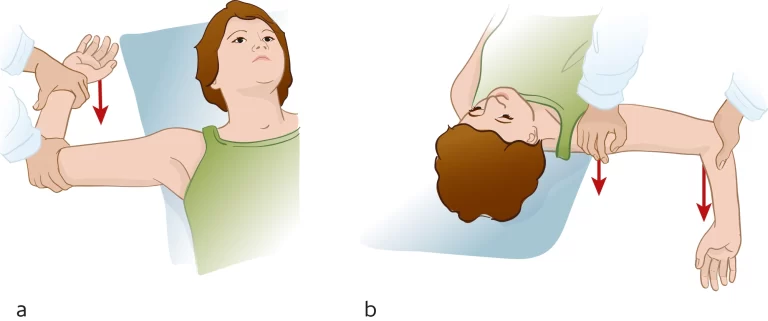Home Visit Physiotherapy Treatment in Ahmedabad
Table of Contents
What is a Home visit treatment?
A home visit treatment is a medical or therapeutic service that practitioners or healthcare professionals offer to patients in the convenience and comfort of their own home. To offer the necessary therapy or care, the healthcare professional visits the patient at home rather than sending them to a hospital or clinic.
Many healthcare providers, such as physicians, nurses, physiotherapists, occupational therapists, speech therapists, and other specialists, can provide treatments at home. These specialists visit the patient’s house with their knowledge and the tools they need to do diagnosis, treatment, monitoring, or rehabilitation.
Treatments provided at home are usually provided to patients who cannot or find it difficult to attend a hospital. This can be the result of old patients with restricted movement, people with chronic illnesses, people with impairments, or people living in distant places with little access to healthcare. Healthcare providers can minimize travel and disruption to patients’ daily routines while ensuring that patients receive the required therapy and support by offering home-based care.
Numerous medical services, including wound care, medication administration, physical therapy exercises, medical evaluations, counseling, and health education, can be provided during home visits.
The patient’s condition, their medical demands, and the healthcare provider’s level of experience all influence the specific treatment given during a home visit.
It’s crucial to remember that the scope and accessibility of home visit treatments can change based on the local laws, insurance policies, and healthcare systems in various nations or areas.
What is a Home Visit Physiotherapy Treatment?
A physiotherapist will come to a patient’s house as part of a home-visiting physiotherapy treatment plan to offer physical therapy, pain management, and rehabilitation. People who find it difficult to get to a clinic or who need individualized care in the convenience of their own home would benefit most from this kind of treatment.
The physiotherapist will evaluate the patient’s condition, strength, mobility, and functional limits during a home visit physiotherapy session. They will talk about the patient’s objectives and create a plan of care that is customized to meet their requirements. The instruments or equipment needed for the treatment will be provided by the physiotherapist.
A range of methods and interventions may be used during treatment to improve movement, lessen pain, and improve the patient’s general physical function. Exercises, manual therapy, stretches, posture adjustments, gait and balance training, and other therapeutic approaches may be used in this.
The patient will be guided through these interventions by the physiotherapist, who will offer guidance and practical support as required.
Depending on the patient’s condition, home visit physiotherapy treatment objectives may change. It could include assisting people in their recovery from injuries, treating musculoskeletal disorders or chronic pain, helping the elderly with their mobility problems, or helping people with neurological diseases become more mobile and independent.
The ease of receiving care at home is provided by home visit physiotherapy, which also removes the need for travel and other potential obstacles to treatment access. It enables the physical therapist to evaluate the patient’s living situation and offer suggestions for changes or adaptations that can enhance their mobility and safety.
It’s crucial to speak with a doctor or physiotherapist to find out if home visit physiotherapy treatment is suitable for your particular requirements and whether it’s offered where you live.
Benefits of Home Visit Physiotherapy Treatment
Patients who receive home visits for therapies have many advantages, especially if they have trouble getting to hospitals. The following are a few benefits of receiving treatment at home:
Convenience: Patients don’t have to travel to a hospital for home visit treatments, which is convenient. People with impairments, long-term diseases, or limited mobility who find it difficult to leave their homes would particularly benefit from this. Patients can receive care in a familiar setting while also saving time and feeling less stressed.
Personalized Care: Medical personnel can offer individualized care that is catered to each patient’s unique need when they visit them at home. By evaluating the patient’s living situation, daily schedule, and support networks, they can provide more individualized and efficient care. The patient’s comfort, motivation, and overall results from treatment can all be improved by the customized approach.
Improved Safety and Monitoring: With in-home care, medical personnel can keep an eye on their patients in their own homes. This makes it possible to evaluate the patient’s general health, functional skills, and safety concerns more accurately. It also makes it easier to identify possible risks or hazards early on and enables quick management.
Increased Compliance: For a variety of reasons, including transportation issues or apprehension about visiting medical facilities, some patients may find it difficult to stick to treatment plans or follow-up appointments. Home visiting services can enhance treatment compliance and continuity of care by bringing the treatment to the patient’s home.
Support and Involvement of the Family: Home visit therapies provide family members or caregivers the chance to actively participate in the patient’s care. They can take part in treatment sessions, pick up helpful skills, and get information on how to manage the patient’s illness. Better long-term outcomes may result from this partnership, which may strengthen the patient’s network of support.
Cost-Effective: Compared to hospital or clinic appointments, home visit treatments may occasionally be more affordable. They do away with the requirement for transportation costs and lower the risk of emergency room visits or readmissions to the hospital due to unfulfilled care needs.
It is noteworthy that the accessibility of home visit therapies may differ based on local laws, insurance policies, and healthcare systems. It is advised to find out what possibilities are available in your area by speaking with medical professionals or hiring expert home visit services.

How to Book a Physiotherapist at Home?
You can arrange for a home visit with a physiotherapist by doing the following:
Speak with your healthcare provider: To begin, have a conversation with your primary care physician or specialist about your need for physiotherapy. They can evaluate your condition, decide whether you would benefit from home visit physiotherapy, and provide a recommendation if needed.
Get in touch with home health organizations: Make contact with local home health companies or groups that provide in-home physical therapy services. These organizations frequently have a group of licensed physiotherapists on staff who are able to treat you at home. These organizations’ contact details can be located via web searches, regional directories, or referrals from your healthcare practitioner.
Find out about services and availability: Get in touch with the home healthcare organization to find out if physiotherapists are available for house visits. Talk about your schedule, needs, and any other relevant details. Find out what treatments they offer, how qualified their physiotherapists are, and whether or not they take your insurance, if any.
Give the information that is required: You could be asked to submit personal data, medical history, and condition-specific information throughout the booking process. The physiotherapist can better assess your needs and tailor the treatment with the use of this information.
Make an appointment: Collaborate with the home healthcare organization to arrange a suitable time slot for the physiotherapist to come to your residence. Think on your availability as well as any other elements that can affect the schedule.
Verify the specifics and the logistics: Verify with the home healthcare agency the appointment’s date, time, and duration. Talk about any special needs or arrangements that need to be made for the physiotherapy session. Make sure the area and tools needed for the treatment are available.
Get ready for the visit: Make sure the place in your home where the physiotherapist will be working is tidy, cozy, and risk-free before their arrival. Prepare any relevant test results, medical records, or prescriptions in advance for the physiotherapist to evaluate.
You can effectively schedule a physiotherapist for a home visit by following these instructions and working with the home healthcare service. To guarantee efficient treatment and continued care, don’t forget to notify the physiotherapist of any changes or cancellations ahead of time and to keep lines of communication open.
How Can I Get Ready at Home for a Physiotherapy Session?
A seamless and successful therapeutic experience can be ensured by getting ready for a physiotherapy appointment at home. These actions will assist you in getting ready:
Make sure the area designated for the physiotherapy session is free of any obstructions or clutter by clearing the treatment area. During the session, move any furniture or items that could impede movement or be dangerous.
Provide any equipment that is required: The physiotherapist may ask for particular tools or equipment based on your treatment plan. Find out ahead of time what supplies you’ll need, such as stability balls, yoga mats, weights, and workout bands. Ensure that these things are hygienic and conveniently located.
Wear clothing that is suited for the situation: Dress comfortably so that you can move around and get to the areas of your body that will be treated with ease. Stay away of wearing anything too tight or constricting since this could impair your movement or make it harder for the physiotherapist to evaluate and treat the affected regions.
Gather relevant medical information: assemble relevant medical data Keep any relevant test results, medicines, and medical records close at hand so the physiotherapist can evaluate them. This might help inform the treatment approach and provide important details about your illness.
Express your objectives and worries: Consider your objectives and worries about your condition or rehabilitation before the session. Share these with the physiotherapist so they can adjust the treatment plan to meet your individual requirements.
Get your questions ready: Write down any questions you may have in advance regarding your health, your treatment plan, or the exercises you are doing. By doing this, you can make the most of the physiotherapist’s experience and address any issues you may have throughout the session.
Create a comfortable environment:: Make sure the lighting is appropriate for the session and that the temperature in the space is pleasant. If listening to soothing or inspiring music aids in your ability to focus or relax during treatment, think about playing it.
Prepare for the evaluation: The physiotherapist may do a preliminary evaluation to determine your strength, mobility, range of motion, and condition. Prepare a list of your symptoms, your level of pain, and any movements or activities that make your condition worse or better.
Inform the physiotherapist of any updates or changes: At the start of the session, let the physiotherapist know if anything has changed regarding your health or condition since the last one. This covers modifications to your treatment plan that may be necessary, such as new symptoms, surgeries, or drug changes.
Keep yourself hydrated: Keep a bottle of water close by so you can drink it both during and after the workout. Drinking enough water is essential for both recovery and peak performance.
You may contribute to setting up a home physiotherapy treatment environment that works by following these preparatory procedures. For the best results, always remember to be open and honest with your physiotherapist, to do what they say, and to fully engage in the session.
Cost Of Physiotherapy Treatment In Ahmedabad
The location, kind of clinic or facility, level of experience and skill of the physiotherapist, and nature of the specific treatment needed are some of the variables that affect the cost of physiotherapy treatment in India. An outline of the typical price range for physiotherapy services in India is shown below:
Initial evaluation: Depending on the facility and region, the price of a physiotherapist’s initial evaluation or consultation can range from about Rs. 300 to 1,500 or more.
Individual Treatment Sessions: Depending on the length of the session and the complex nature of the treatment, the price of each individual physiotherapy treatment session may change. A single session may cost anything from Rs. 300 to 1,500 or more on average.
Package or Multiple Session pricing: A few physiotherapy clinics or practices provide package pricing or reduced rates for several sessions. When compared to the pricing for individual sessions, these packages might result in cost savings. Depending on the facility and the amount of sessions, a bundle of physiotherapy treatments might cost anywhere from ₹3,000 to 15,000 or more.
It’s crucial to remember that the price ranges listed above are estimates that may differ considerably depending on the location and specifics of each case. Furthermore, different price ranges may apply to specialist therapies like neurological rehabilitation or sports physical therapy.
Generally speaking, physiotherapy care in public hospitals or other healthcare settings is less expensive than in private clinics. Appointment availability and wait times in government facilities, however, could differ.
To acquire precise and current information on the cost of physiotherapy treatment tailored to your unique needs and location, it is advised that you get in touch with nearby physiotherapy clinics or healthcare facilities. It’s a good idea to inquire about the coverage and reimbursement policies of your health insurance provider since they may have an impact on the out-of-pocket costs associated with physiotherapy treatments.
How can I find a Physiotherapist Near Me?
You can take the following actions to locate a physiotherapist in your area:
Online search: Look up “physiotherapist near me” or “physiotherapy clinics near me” using search engines like Google, Bing, or Yahoo. Usually, a list of local physiotherapy clinics or practitioners appears in the search results.
Internet directories: Look through directories like Practo, Justdial, or Mobile Physio. that are specially made for medical practitioners. These directories let you look for physiotherapists near you and include details on their specializations, contact information, and patient testimonials.
Local Directories: Look through your area’s telephone or business directories, among other local directories. Search for entries under headings such as “Rehabilitation Services,” “Physical Therapy,” or “Physiotherapy.” These directories frequently provide the phone numbers of nearby physiotherapy clinics or practitioners.
Referrals: Ask friends, family, coworkers, or your healthcare practitioner for referrals from people you know who have previously undergone physiotherapy treatment. Their personal experience may enable them to suggest a physiotherapist or clinic.
Local Medical Facilities or Hospitals: Speak with your neighborhood’s hospitals, clinics, or other healthcare facilities to find out what physiotherapy services they give or if they can recommend physiotherapists in your region.
Expert Organizations: Visit the websites of the national or local professional societies for physiotherapy. You can locate certified physiotherapists in your area by using the directories or search functions that these groups frequently provide. State-level physiotherapy associations and the Indian Association of Physiotherapists (IAP) are two examples.
Online Reviews and Ratings: Look through online reviews and ratings to find local physiotherapy practices or clinics. You may find patient reviews and ratings on websites such as Practo, Yelp, and Google Maps, which can aid you in making an informed choice.
It is advised that you get in touch with potential local physiotherapists or clinics directly to find out more about their offerings, availability, and any special needs you may have. When making your choice, take into account elements like the clinic’s reputation, the physiotherapist’s credentials and expertise, and the clinic’s closeness.
To make sure the physiotherapist satisfies the required professional standards, don’t forget to verify if they are licensed or registered with the relevant regulatory organization in your nation or region.
What will be the duration of each session?
Each physiotherapy session’s length might vary based on a number of variables, such as the patient’s health, the therapy objectives, and the particular plan of care that the physiotherapist has advised. A typical physiotherapy session lasts anything from thirty to sixty minutes. It’s crucial to remember that session lengths can change depending on the demands of each patient and the policies of the clinic.
The physiotherapist will examine your condition, talk with you about your goals, and create a customized treatment plan during the initial evaluation. Based on the complexity of your illness and the necessary interventions, they will give you an approximate estimate of how long the session will last.
Sessions may occasionally be shorter, particularly for follow-up visits that concentrate on certain exercises or therapies. The length of the session might be shortened, for instance, if you follow a particular workout regimen or use a particular modality, such as ultrasound or electrical stimulation.
On the other hand, a longer session length may be necessary for more complicated illnesses or therapies requiring several interventions in order to provide enough time for patient education, therapy, and assessment.
It’s critical that you and your physiotherapist stay in constant contact to go over your progress, your treatment objectives, and any worries you may have. If needed, they can offer advice and modify the length of sessions or the treatment plan to guarantee the best possible results.
Available Home Visit Physiotherapy Treatment
The goal of physiotherapy services is to promote, restore, or enhance physical function, mobility, and quality of life using a broad range of treatments, interventions, and procedures. The following are some essential elements of physiotherapy services:
Evaluation and Assessment: Physiotherapists conduct thorough evaluations to analyze a patient’s health, functional limitations, strength, range of motion, posture, and other physical characteristics. They acquire data and choose the best course of action for treatment by utilizing a variety of assessment instruments and methodologies.
Treatment Planning: Physiotherapists create customized treatment plans based on the results of the evaluation, taking into account the unique needs and objectives of each patient. A mix of manual therapy methods, therapeutic modalities, therapeutic exercises, and other interventions may be used in the treatment plan.
Therapeutic Exercises: To enhance strength, flexibility, balance, coordination, and endurance, physiotherapists recommend particular activities. To improve general physical function, these workouts may focus on certain muscle groups, joints, or functional movements.
Manual Therapy: To move or manipulate joints, soft tissues, and muscles, physiotherapists use hands-on techniques. Joint mobilization, soft tissue massage, stretches, myofascial release, and trigger point therapy are examples of manual therapy procedures.
Therapeutic Modalities: In order to help with pain management, inflammation reduction, tissue repair, or improved circulation, physiotherapy may make use of therapeutic modalities. Heat, cold, ultrasound, electrical stimulation, and laser therapy are examples of common methods.
Education and Counseling: Physiotherapists instruct patients and others who care for them about posture correction, self-management methods, ergonomics, injury prevention, and methods for reducing pain and maximizing function.
Assistive Equipment and Adaptive Equipment: To promote mobility and enhance functional abilities, physiotherapists may advise and help patients use assistive equipment like crutches, canes, walkers, or orthotics. In order to promote independence in day-to-day tasks, they can also offer advice on how to use adaptive equipment.
Rehab & Recovery: Physiotherapy is essential for managing problems like musculoskeletal injuries, neurological disorders, respiratory issues, and chronic pain, as well as for post-operative rehabilitation and the recuperation of sports injuries. Physiotherapists assist patients in healing, function restoration, and a safe transition back to sports and activities.
Injury Prevention and Health Promotion: Physiotherapists prioritize not only the treatment of pre-existing illnesses but also the prevention of injuries and the enhancement of general health and well-being. They might offer guidance on ways to avoid accidents, ergonomics at work, fitness regimens, and lifestyle adjustments that will enhance physical well-being.
Licensed and qualified physiotherapists who have finished an accredited educational program and are registered with the relevant regulatory organization in their jurisdiction provide physiotherapy services. The particular services offered could change depending on the patient’s need, the physiotherapist’s experience, and the location (clinics, hospitals, or homes) where the services are performed.
Home-visit physiotherapy and clinical physiotherapy treatment comparison
The goals of both clinical and home visit physiotherapy are to enhance physical function and promote rehabilitation. Nonetheless, the two strategies differ significantly in a few important ways:
Setting: The main distinction is the environment in which the therapy is given. Clinical physiotherapy is provided in a clinic or other healthcare setting, whereas home visits physiotherapy is provided by the physiotherapist to the patient at their residence.
Convenience and Accessibility: For those who find it difficult to travel to a clinic, home visit physiotherapy provides both convenience and accessibility. It lowers mobility restrictions, does away with the necessity for transportation, and enables patients to get care in the convenience of their own homes. Contrarily, patients receiving clinical physiotherapy must travel to the clinic, which may provide difficulties for certain people.
Personalized Care: A more individualized approach to treatment is made possible by home visit physical therapy. The patient’s living situation, everyday activities, and particular difficulties at home can all be evaluated by the physiotherapist. This makes it possible for the physiotherapist to create a treatment plan that considers the particular conditions of the patient. Treatment in clinical physiotherapy is typically given in a more standardized clinical environment.
Resources and Equipment: Compared to home visits, clinical physiotherapy frequently provides access to a greater variety of specialist equipment, exercise machines, and other resources. Clinics may offer specialized areas for different types of care as well as access to a wider variety of therapeutic modalities and equipment, which can be helpful for more complex rehabilitation requirements or specific disorders.
Social and Interpersonal Interaction: Clinical physiotherapy offers a setting in which patients can engage with others who might be going through comparable procedures or dealing with comparable difficulties. This can foster a feeling of unity, solidarity, and common ground. Given that home visit physiotherapy generally focuses on one-on-one treatment in the patient’s home, it might not provide as many possibilities for social engagement.
Safety considerations: When doing home visit physiotherapy, the physiotherapist must evaluate the patient’s house for possible safety risks and modify the course of treatment as necessary. This entails taking care of things like furniture arrangement, floor coverings, and other obstructions that can impair the patient’s safety or movement. A controlled and secure therapeutic environment is guaranteed in a clinical setting because safety precautions and equipment are usually already in place.
It’s crucial to remember that the decision between clinical and home visit physical therapy is based on the patient’s unique needs, preferences, and circumstances. While some people could benefit more from the comfort and individualized care of house calls, others might need the specialist tools and resources that are available in a medical facility. Physiotherapy consultation can assist in identifying the best course of action for an individual’s recovery requirements.
In Which conditions, Physiotherapy Treatment at Home required?
For a variety of conditions and circumstances when people might find it difficult to receive clinical physiotherapy or need individualized care in their home, home visit physiotherapy can be helpful.
The following typical situations might require home visit physiotherapy treatment:
Mobility Restrictions: It may be difficult for people with mobility restrictions, such as those who are bedridden, have trouble walking, or are wheelchair-bound, to go to a physiotherapy facility. With home visit physiotherapy, they can get the care they need without having to worry about transportation or accessibility problems.
Post-Surgery or Post-Hospitalization: Physiotherapy may be necessary for certain individuals to support their recuperation and rehabilitation following surgery or a hospital stay. Home visit physical therapy can be especially helpful in the early phases of recovery when movement may be restricted and clinic visits may be difficult or dangerous.
Elderly Patients: Home visit physiotherapy may be beneficial for older persons who have chronic diseases, mobility challenges, or trouble traveling. It meets their unique requirements and objectives while offering them the ease of getting care in a cosy and familiar setting.
Neurological conditions: In order to control their symptoms, increase mobility, and improve their functional abilities, patients with neurological illnesses including multiple sclerosis, Parkinson’s disease, or stroke may need continuous physiotherapy. Physiotherapy provided at home enables individualized treatment regimens that take into account the particular difficulties and constraints related to these diseases.
Palliative Care: Home visit physical therapy can help patients with palliative or end-of-life care manage their pain, feel more comfortable, keep their mobility, and improve their quality of life. Home visits guarantee that patients can receive physical therapy in a kind and encouraging setting.
Safety Concerns: Some people could find it challenging to navigate crowded hospital settings or public transit. For patients with balance problems, fall risk, or anxiety associated with new environments, home visit physiotherapy removes these worries and offers a safer treatment environment.
Support and Education for Caregivers: Physiotherapists can work one-on-one with family members or caregivers through home visit physiotherapy, offering instruction, training, and advice on how to help with exercises, transfers, and mobility skills. Caregivers’ participation can improve the efficiency and continuity of care.
A physiotherapist should be consulted in order to evaluate the individual needs and decide whether home visit physiotherapy is suitable for a given condition. To create a customized care plan, the physiotherapist will take into account the patient’s functional skills, medical history, and treatment objectives.
How to Select the Best Physiotherapist for a Home Treatment?
It’s important to take your time choosing the ideal physical therapist for a home visit so you can get high-quality care in the convenience of your own home. The following guidelines will assist you in choosing the best physical therapist for a house visit:
Request Referrals: To begin, ask your primary care physician, friends, relatives, or medical professionals for suggestions. They might know respectable physiotherapists who do house visits or they might have firsthand experience.
Verify Credentials Make sure the physiotherapist has the necessary training and licenses to operate in your region. Verify credentials, memberships in professional associations, and registration with the relevant regulatory agency. This guarantees that the physiotherapist satisfies the necessary practice standards and follows moral principles.
Experience and Specialization: Take into account the physiotherapist’s background and level of proficiency in managing your particular ailment or area of concern. Certain physiotherapists have specific areas of expertise, such as neurology, orthopedics, pediatrics, or geriatrics. Seek out a physiotherapist who possesses the necessary training and experience for your needs.
Evaluations and Referrals: To determine whether or not past clients were satisfied with the physiotherapist’s services, read internet reviews and testimonials. Positive evaluations may be a sign of high-quality treatment, but to make an informed choice, take into account both positive and negative comments.
Availability and Accessibility: Find out whether the physical therapist can make house calls in your area and within a fair amount of time. Take into account their willingness to travel a certain distance to give home visit services, as well as their availability and flexibility with scheduling.
Communication and rapport: Select a physiotherapist with whom you are at ease and who you can build a strong relationship. Successful treatment outcomes depend on good therapy relationships and effective communication. It might be a good idea to have a quick phone conversation or initial appointment to gauge their level of attentiveness and communication style.
Insurance Coverage: Find out whether the physiotherapist takes your health insurance or if there are alternative ways to pay. Make any restrictions on coverage, rules on reimbursement, or out-of-pocket expenses related to home visit physical therapy services clear.
Professionalism and Ethics: Seek out a physiotherapist who exhibits ethical behavior, professionalism, and respect. Your well-being should be their top priority, and they should involve you in decision-making about your care by clearly outlining treatment plans.
Continuity of Care: Take into account if the physiotherapist is able to offer continuing treatment and follow-up appointments as required. Maintaining continuity of care is critical for monitoring development, modifying treatment regimens, and attaining the best possible results.
Personal Preferences: Consider your preferences with regard to gender, language, cultural fit, and any special needs you may have. Select a physiotherapist who can take these inclinations into account and establish a welcoming treatment space.
To make an informed choice, it is advised that you speak with a few physiotherapists and ask relevant inquiries. You can choose the physiotherapist that best suits your needs for home visit physiotherapy by taking these criteria into account.






